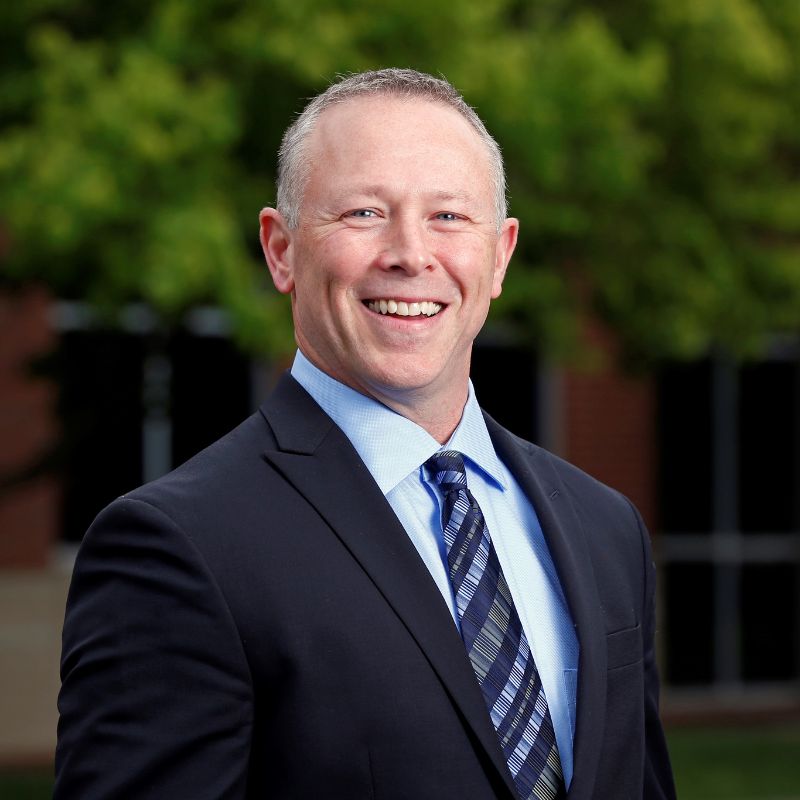How Brad Koss went from IT professional to associate chief of Vanderbilt's 300-member anesthesia team
Twenty years after graduating from Belmont University's School of Nursing — now the Inman College of Nursing — Brad Koss has built a remarkable career that spans from bedside nursing to executive leadership in one of the nation's premier medical institutions. 
From Computer Systems to Patient Care
Today, Koss serves as one of two associate chiefs for Vanderbilt University Medical Center's anesthesia team, overseeing nearly 300 certified registered nurse anesthetists (CRNAs). But his path to health care leadership began with an unexpected conversation at a softball game.
"I had actually obtained a BS degree in Computer Information Systems and worked in IT for about 10 years," Koss explained. "A buddy of mine was a nurse on our softball team, and one day he started explaining that he was a CRNA. I didn't understand what that was, so he set me up to shadow him."
That shadowing experience in Louisiana sparked a career change that would require Koss to return to school to complete prerequisites before Belmont offered him the opportunity he needed.
"Amazingly, they were gracious and willing to work with me, considering that I had been out of school for about 10 years," Koss said. "They didn't look at what I did back when I was young and naive. They took into consideration what I was doing — working full time and obtaining the prerequisites — and accepted me into the program."
Building a Foundation for Leadership
Graduating from Belmont in 2005, Koss immediately joined Vanderbilt's trauma intensive care unit (ICU), where he gained the critical care experience necessary for anesthesia school. After three years at the bedside, he pursued his master's degree at Middle Tennessee School of Anesthesia, graduating in 2009 and returning to Vanderbilt as a staff CRNA.
His leadership journey began as a student coordinator, managing clinical rotations for affiliate programs. He then transitioned into education management, overseeing continuing education for all CRNAs and students. When leadership opportunities arose, Koss stepped into interim roles before being promoted to associate chief in 2022.
"We've grown so much that they added a second associate chief position because our team had expanded to nearly 300 CRNAs," he said.
Beyond his clinical and administrative responsibilities, Koss has remained deeply engaged with professional advocacy. He served on the Tennessee Association of Nurse Anesthetists board of directors, including terms as president-elect, president and immediate past president. He also chaired public relations committees and contributed to the recent American Association of Nurse Anesthesiologists national conference hosted in Nashville.
The Belmont Foundation
Reflecting on his Belmont education, Koss credits the program's clinical foundation for his success in transitioning from nursing to anesthesia practice.
"The clinical aspect that we received at Belmont was huge," he said. "Being able to make that jump right into the trauma ICU, where you see everything — we did procedures at bedside that you would have never thought you would see in a lifetime."
Koss particularly valued his critical care courses and clinical rotations, which directly aligned with his career goals. But he also appreciated the community health component, which exposed him to diverse patient populations — experience that proved invaluable when caring for trauma patients from all walks of life.
Advice for Future Nurses
For current students, Koss emphasizes the importance of mastering fundamental skills and taking advantage of modern resources.
"Get in there and learn as much as you can," he advised. "Skills lab is very important, more than you would ever imagine — whether it's learning to start an IV, take a blood pressure or assess a patient. Take extra time beyond the required hours because it goes a long way into what you're going to see with a real person lying in a bed."
He also stresses the importance of self-care and seeking help when needed, noting that both state and national CRNA organizations now prioritize wellness programs and support systems.
Lasting Connections and Gratitude
Looking back on his journey, Koss remains grateful for the faculty who shaped his education, many of whom continue to influence nursing students today. He specifically recognizes Martha Buckner, Lucyellen Dahlgren, Beth Hallmark, Ruby Dunlap, Leslie Folds and Sandy Murabito as lasting influences.
"It's amazing to still see them engaged with the program and the profession," he said. "Seeing that desire they have to continue to put out top-notch, high-quality nurses is amazing. They touched my life and several of my colleagues' lives."
For Koss, nursing offers unparalleled career flexibility and growth potential.
"If you get tired and bored with one area of practice, you can always make a transition into another area without obtaining another license," he said. "The opportunities it provides — sky's the limit."
His advice to prospective nurses is simple: "It's a pathway I wish I had started sooner in my life instead of waiting so long to pursue, but it has been the most rewarding decision I could have ever made as it relates to a career."
Learn More
Learn more about the Inman College of Nursing.

